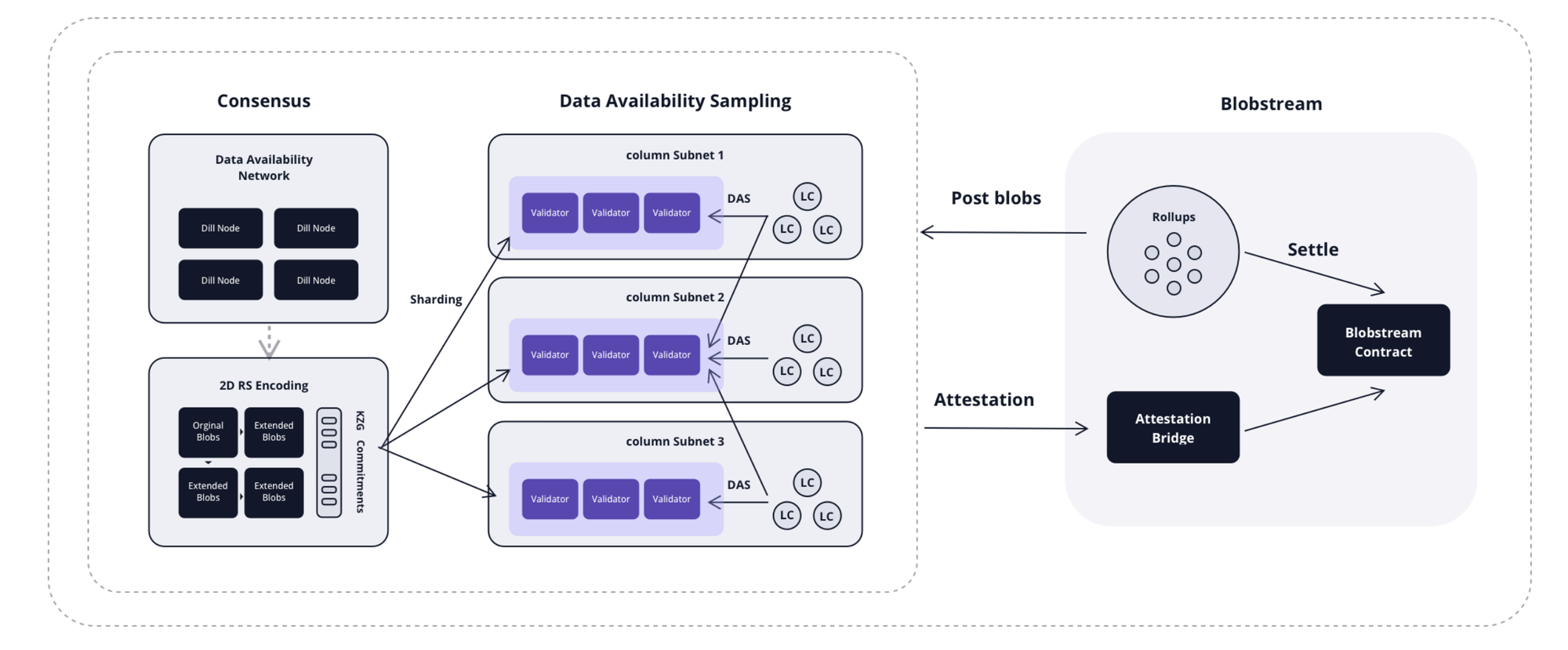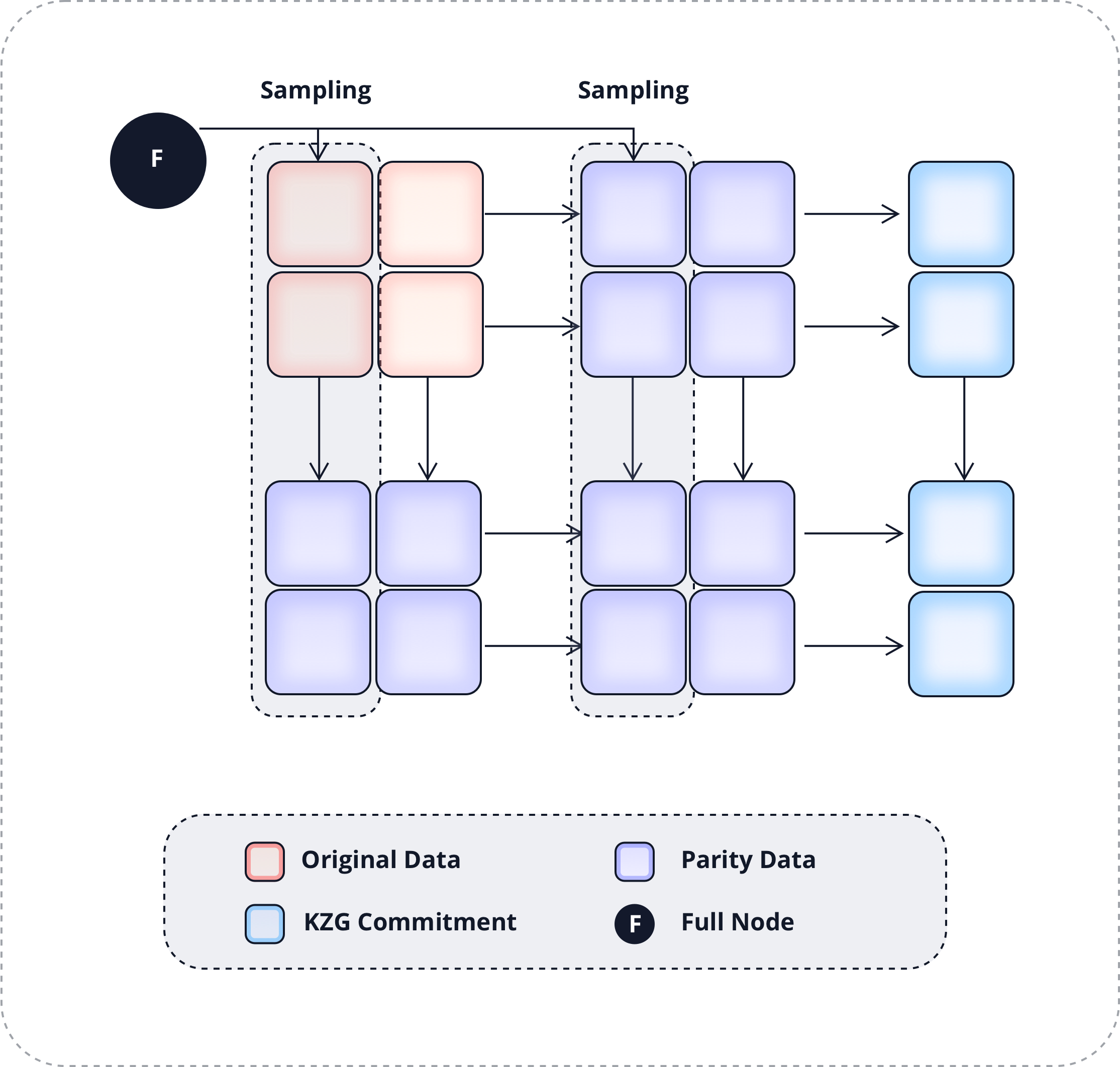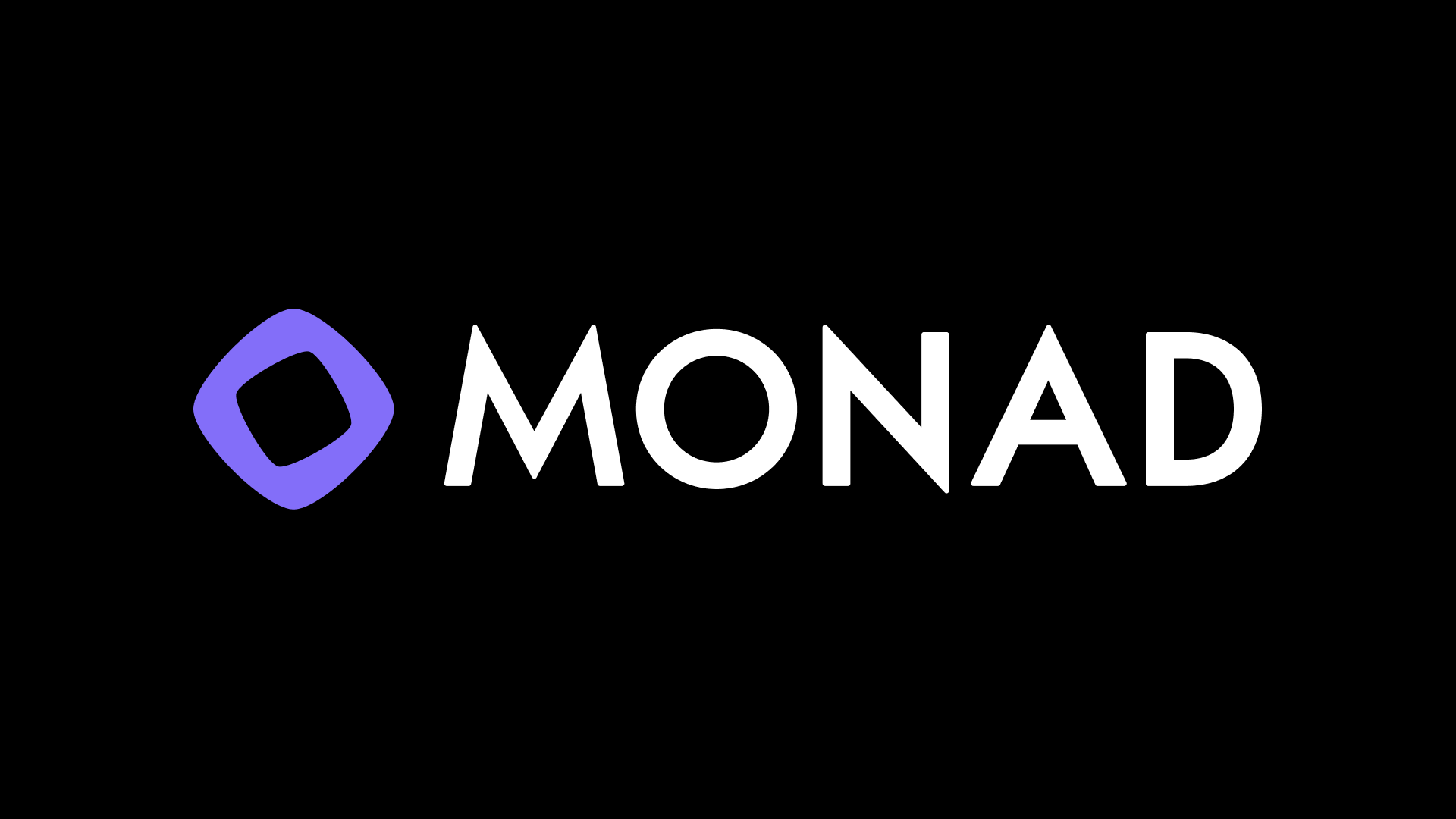Exploring Blobstream: A New Data Availability Solution by Dill
Posted on October 7, 2024 by Admin

Introduction to Blobstream
The Blobstream technology was invented by Celestia Labs and was first introduced on October 2, 2023. Previously, it was called Quantum Gravity Bridge (QGB). Blobstream is the first data availability solution for Ethereum, allowing developers to build high-performance Layer 2 (L2) solutions by utilizing Celestia's optimized data availability layer, based on the Data Availability Sampling (DAS) technique for scaling.
Blobstream is a data availability technology developed within the Dill system, aimed at providing solutions for storing and verifying data between Rollup networks and Layer 1. Blobstream not only optimizes performance but also enhances security for decentralized applications on the blockchain platform.
How Blobstream Works
- Connecting Rollup and Layer 1
Blobstream acts as a bridge between Rollup networks and Layer 1, allowing rollups to store and verify proven data. This enhances interoperability between different systems within the blockchain.
- Attestation Bridge
The Blobstream system includes an Attestation Bridge, responsible for generating proofs that demonstrate the integrity of the data. These proofs are sent to the Blobstream Contract, enabling rollups to quickly and efficiently verify the validity of the data.
- Managing Blob Data
Data within Dill is fragmented into smaller blocks called "blobs," each with a maximum size of 128KB. Blobstream manages the storage and distribution of these blobs across different subnets within the network.
Supporting Technologies for Blobstream
- KZG Commitments
The KZG (Kate-Zaverucha-Goldberg) technique is used to commit to and verify the integrity of blob data. This ensures that the data remains unchanged during transmission.
- 2D Erasure Coding (EC)
The 2D EC coding technique is applied to optimize data storage and access, allowing for minimized storage space while ensuring data recoverability.
- Data Availability Sampling (DAS)

Blobstream employs DAS to verify data availability without requiring all full nodes to store all data. Only a few light nodes perform random validation, enhancing efficiency and reducing storage costs.
Benefits of Implementing Blobstream
- Enhanced Scalability
With its sharding structure and parallel processing capabilities, Blobstream helps Dill achieve scalability from 10x to 100x compared to other DA networks.
- Support for Decentralized Applications
Through the Blobstream system, Dill provides a robust infrastructure for decentralized applications, promoting the development of the blockchain ecosystem.
- Reduced Transaction Costs
Optimizing the verification and storage processes helps minimize transaction costs for users, making blockchain usage more accessible.
Differences Compared to Other DA Solutions
Blobstream stands out compared to other data availability solutions due to:
- Decentralization: Blobstream shares security with Celestia through a Proof-of-Stake (PoS) consensus system, enhancing decentralization and security for the network.
- Detection of Malicious Behavior: The system can detect if 2/3 of Celestia's validators behave incorrectly by withholding data, allowing for potential slashing measures.
- Gas Cost Savings: Blobstream enables significant savings in gas costs for relayers by aggregating Zero-Knowledge (ZK) proofs together.
Conclusion
Blobstream is an essential component of Dill's architecture, improving availability, security, and overall network performance. With significant advancements in scalability and transaction costs, Blobstream promises to make a substantial contribution to the sustainable development of the blockchain ecosystem in the future.
Top post

Blockcast: Accelerating the Internet, Connecting the World
What is Blockcast? Blockcast is a next-generation Content Delivery Network (CDN) that uses multicast technology to address bandwidth challenges in the era of booming streaming. Born at UC Berkeley, the project aims to build a decentralized network that leverages community power to deliver high-quality content like 4K and 8K globally while slashing costs for providers. With the slogan "Content Delivery, Powered By You!", Blockcast is not just a technology but an ecosystem where anyone can parti
June 2, 2025

Analysis of Nockchain: A ZK-Proof-of-Work Blockchain
Introduction to Nockchain In the fast-evolving world of blockchain, Nockchain emerges as a unique project aiming to revolutionize decentralized computing. Founded in 2023 in Berlin, Germany, Nockchain is a high-throughput blockchain leveraging a Zero-Knowledge Virtual Machine (ZKVM) and a novel ZK-Proof-of-Work (ZKPoW) consensus mechanism. With its native token, $NOCK, and a promise of a fair launch, Nockchain has sparked interest in the Web3 community. However, controversies at its mainnet lau
May 29, 2025

Monad: The Future of Layer 1 Blockchain with Unparalleled Performance
As the blockchain industry continues to evolve, Monad emerges as a promising Layer 1 (L1) blockchain, delivering exceptional performance and scalability. Aiming for 10,000 transactions per second (TPS), a block time of just 0.5 seconds, and full compatibility with the Ethereum Virtual Machine (EVM), Monad is capturing the attention of developers and users alike. Let’s dive into the details of this groundbreaking project and discover how you can get involved today! What is Monad? Monad is a La
May 12, 2025

Drosera Network: Revolutionizing DeFi Security and How to Run a Node
Decentralized Finance (DeFi) has transformed the financial landscape, but with great innovation comes great risk. Since 2014, DeFi protocols have lost nearly $80 billion to exploits, highlighting the urgent need for robust security solutions. Enter Drosera Network, a decentralized security protocol built on Ethereum that aims to safeguard DeFi ecosystems through automated threat detection and response. In this article, we’ll dive deep into what Drosera Network is, why it matters, and provide a s
April 20, 2025

Gensyn: Revolutionizing AI Compute and Guide to Running a Node
Introduction to the Gensyn Project Gensyn is a decentralized Machine Learning Compute Protocol designed to connect global computing resources into a supercluster tailored for artificial intelligence (AI). Developed by a UK-based team, Gensyn aims to reduce the costs of training AI models, increase accessibility for researchers, engineers, and academics, and ensure transparency and censorship resistance through blockchain technology. Goals and Vision * Cost Reduction: Gensyn claims it can cu
April 14, 2025

Pipe Network: The Future of Decentralized CDN and Opportunities from the Node DevNet 2 Program
In the digital era, where the speed of content delivery is a critical factor, content delivery networks (CDNs) have become indispensable in ensuring a seamless user experience. However, giants like Cloudflare and Akamai, while powerful, remain constrained by their traditional centralized models. Enter Pipe Network—a decentralized CDN built on the Solana blockchain—emerging as a fresh contender promising to revolutionize how we approach content distribution. Notably, its current Node DevNet 2 pro
March 18, 2025